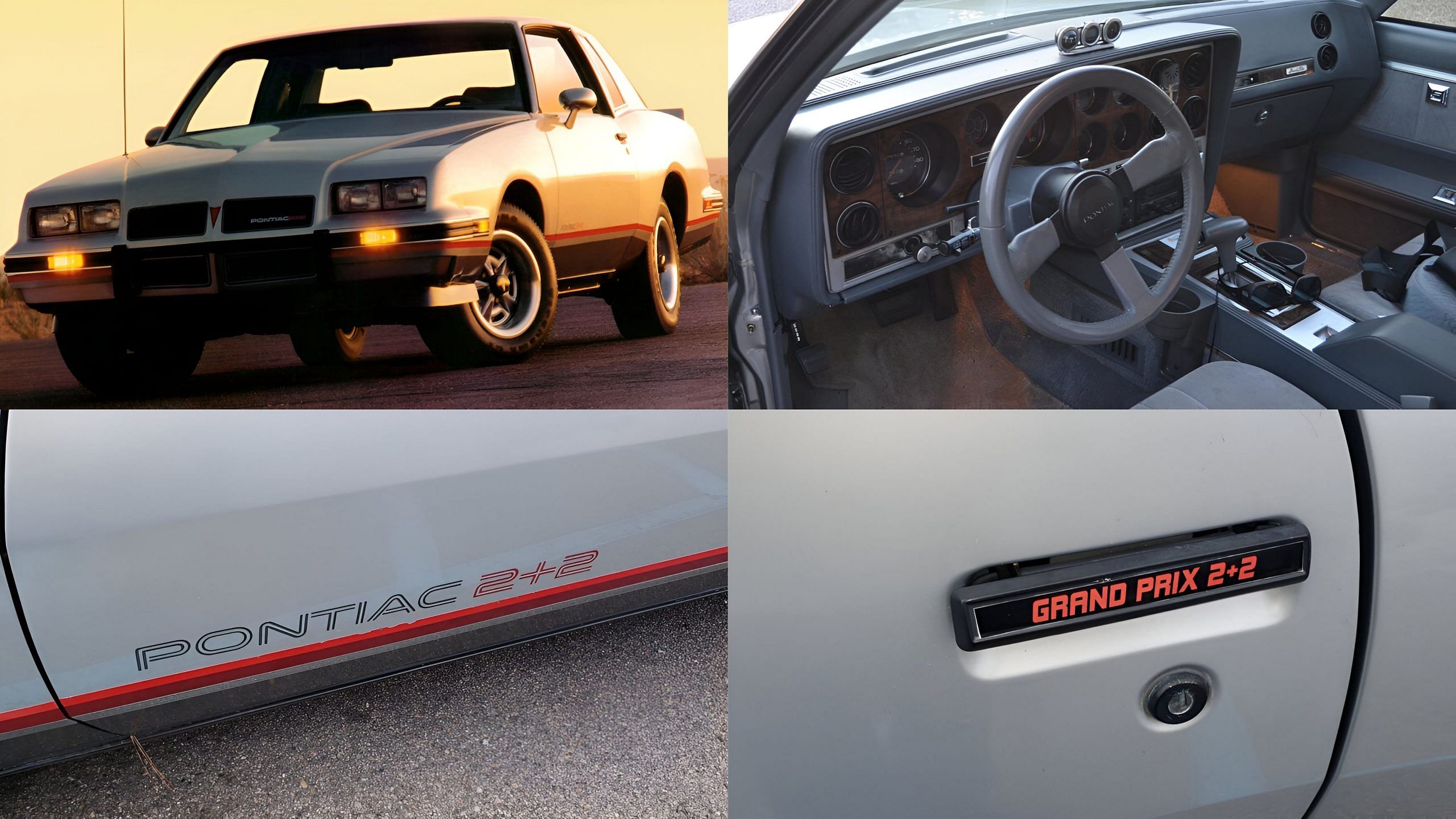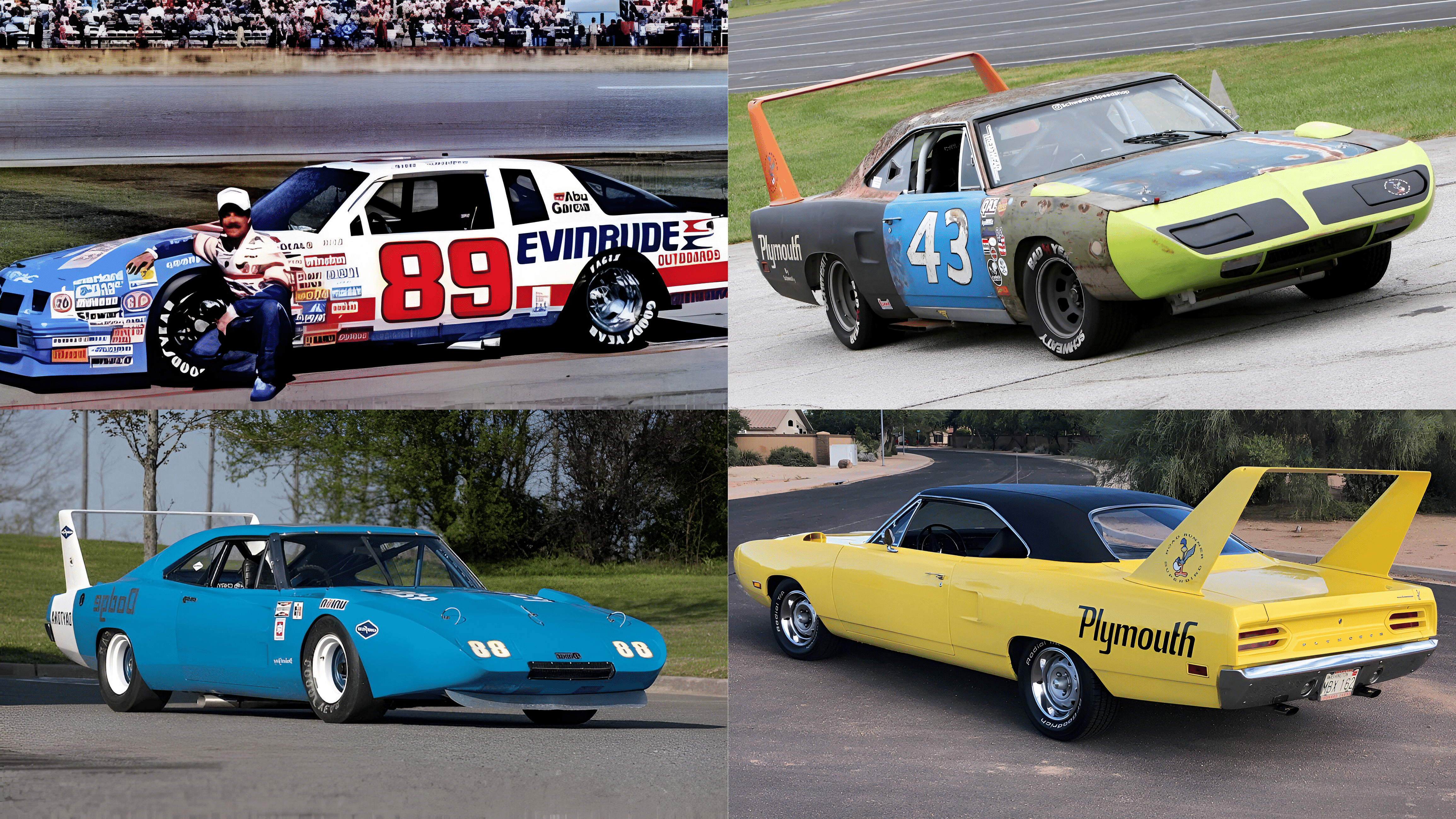The 1986 Pontiac Grand Prix 2+2 Is One Of The Most Ingenious Aerodynamic Cars From NASCAR
The 1986 Pontiac Grand Prix 2+2 was an engineering marvel that redefined aerodynamics in American muscle cars. With jaw-dropping mechanisms, the 2+2 achieved remarkable speeds and handling. Its legacy as a rare homologation special endures, showcasing Pontiac's commitment to pushing boundaries in performance and aerodynamic styling.
Published January 31, 2024

The 1986 Pontiac Grand Prix 2+2 was an aerodynamic innovator for its time. This limited-production muscle car utilized extensive wind tunnel testing and engineering to excel on NASCAR race tracks. With a sloped front fascia and distinctive bubble rear window, the Grand Prix 2+2 reduced drag compared to competitors. It pushed boundaries in performance, helping shape the aerocoupe trend in motorsports. Though never a huge commercial success, the 2+2 left a legacy as a rare homologation special that highlighted Pontiac’s relentless pursuit of speed through precision aerodynamic design. But what sets it apart from the rest? In this article, we delve into the engineering marvel that defined the aerodynamics of this limited-production homologation variant, specifically tailored for NASCAR eligibility.
The Innovation behind this legend

The 1986 Pontiac Grand Prix 2+2, often hailed as a masterpiece in the world of motorsports, was a result of meticulous engineering and design. It wasn't just about raw power but also about ensuring that this racing legend sliced through the wind like a true champion. The Pontiac Grand Prix Aerocoupe 2+2, was a limited-production gem, engineered with NASCAR homologation in mind. Built on the G-body platform shared with the Monte Carlo SS Aerocoupe, it sported a unique rear window design. This full-sized V8-powered machine boasted enhanced aerodynamics for the oval tracks, with a truncated trunk lid designed to fit beneath the bubble window. Only 1,225 were ever crafted, all in silver with red pinstriping and charcoal lower trim, contributing to its collector's item status. Optional upgrades, like power locks/windows, AC, gauges, and handling upgrades like a limited-slip diff and F41 suspension kit, were available for a premium over its $18,000 base price.
Wind Tunnel Testing: The Crucial Step
To understand the true essence of the 1986 Pontiac 2+2's aerodynamics, one must first acknowledge the role of wind tunnel testing. This process was pivotal in optimizing the car's performance. Through extensive testing and analysis, engineers were able to fine-tune every aspect of the vehicle's design, making it a force to be reckoned with on the racetrack. Wind tunnel testing is a crucial method for assessing the aerodynamic attributes of various objects, including vehicles and buildings. This evaluation involves controlled airflow within a specialized facility known as a wind tunnel. The wind tunnel was probably used to simulate racing speeds and cornering to see how the 2+2 performed compared to the standard Grand Prix and competing Ford Thunderbirds. The Thunderbirds is one of the most recognized Hot Rod cars, and is under possession of many celebs including F1 legend Jackie Stewart, famous singer-actor Frank Sinatra, John Travolta, and many others.

Its primary goal is to quantify the forces and moments exerted on the object due to airflow, enabling engineers to enhance its design for better efficiency, performance, and safety. During testing, a scale model or full-scale prototype is placed within the wind tunnel, subjecting it to airflow at varying speeds and angles. Sensors measure the forces and moments, leading to data analysis that reveals the object's aerodynamic behavior and potential improvements. The wind tunnel testing for the 86 Pontiac Grand Prix 2+2 involved the development of its back window on the race car before it was applied to the street car; the pointed front nose and front air dam spoiler were also likely aerodynamic enhancements derived from wind tunnel data to direct airflow into the engine compartment. This scientific approach was used to enhance the 1986 Pontiac Grand Prix 2 2 aerodynamics, resulting in a drag coefficient of 0.368, ensuring its competitive edge in NASCAR Winston Cup.
The Science of Drag Coefficients
Aerodynamics in racing cars revolve around minimizing drag while maximizing downforce. The 1986 Pontiac Grand Prix 2+2 was no exception to this rule. Engineers strived to reduce drag coefficients, ensuring that the car could cut through the air with minimal resistance. The result was a vehicle that achieved remarkable speeds while maintaining control, a feat that left competitors in awe, the 2+2 likely had a lower drag coefficient than competing Ford Thunderbirds due to its more rounded and tapered shape.
The science of drag coefficients, a branch of aerodynamics, quantifies the resistance to air displacement experienced by moving objects. It's crucial in automotive design, as a lower drag coefficient enhances top speeds and reduces fuel consumption, while a higher one is typical for cars prioritizing cornering speeds influenced by downforce. The 1986 Grand Prix variant, addressed the aerodynamic shortcomings of General Motors' G-body coupes, which suffered from blocky styling and aerodynamic drag issues. Pontiac's enhancements, including glass rear bubble windows, reduced the car's drag coefficient from 0.453 to 0.368, improving track performance. The 2+2's drag coefficient of 0.368 falls within the typical 0.3-0.4 range, showcasing its effective aerodynamic improvements. This transformation aimed to enhance performance at high speeds encountered in NASCAR racing, giving it an edge over competing Ford Thunderbirds with its streamlined shape. Drag coefficients are a key factor in assessing a car's aerodynamic efficiency, influencing both speed and fuel consumption.
The Bubble Window Is A Game Changer

One of the most distinctive features of the 1986 Pontiac Grand Prix 2+2 was its bubble window. This design innovation was not just for aesthetic purposes; it had a significant impact on the car's aerodynamics. The bubble window reduced drag and enhanced the vehicle's overall stability, making it a fierce contender on the NASCAR circuit.
Pontiac tried to address a crucial issue with General Motors' G-body coupes, particularly the Chevrolet Monte Carlo, which was also featured in Fast and Furious , and known for their boxy design. These cars struggled with aerodynamic drag and rear-end lift, especially on high-speed NASCAR tracks. To improve their performance, Chevrolet and Pontiac developed aerodynamic enhancements for the street cars. The 1986 Pontiac Grand Prix 2+2, with its distinctive glass rear bubble windows, effectively connected the car's rooflines with its rear decklid spoilers. This innovative design significantly enhanced aerodynamics, reducing drag and giving the 2+2 a unique look compared to other vehicles on the road. The bubble window was a vital element in this car's competitive edge for NASCAR, providing a 2.7% reduction in overall drag coefficient without compromising trunk space.
Pushing the Boundaries of Innovation

What truly sets the 1986 Pontiac Grand Prix 2+2 apart is the commitment of the engineers and designers to push the boundaries of innovation. This car wasn't just about creating a fast vehicle; it was about crafting a racing machine that would define an era. The 1986 Pontiac Grand Prix 2+2 was a homologation special, designed for NASCAR competition alongside the Chevrolet Monte Carlo. These cars faced issues with aerodynamic drag and rear-end lift, impacting their on-track performance. To address this, Pontiac introduced the Grand Prix 2+2 Aerocoupe, featuring a sloped front fascia and a distinctive bubble rear window. However, commercial success eluded this model initially, and it didn't sport Pontiac's most potent engine, sporting a 165-horsepower V8. Despite its limitations, the innovative bubble rear window and aerodynamic enhancements left a mark, influencing future car designs and demonstrating a pathway for NASCAR eligibility. While not a major success in itself, the Grand Prix 2+2's legacy endures as a rare, collectible NASCAR homologation special that foreshadowed GM's shift towards rounded, aerodynamic styling in the late 1980s and 1990s.
The Road to NASCAR Eligibility

The journey towards creating this limited-production masterpiece was driven by the pursuit of NASCAR eligibility. The rules and regulations of NASCAR racing were stringent, and Pontiac needed a car that would not only meet these standards but excel in them. This led to the birth of the 1986 Pontiac Grand Prix 2+2. In the mid-1980s, Pontiac aimed to rival Ford's Thunderbirds on high-speed tracks, leading to the creation of the Grand Prix 2+2 Aerocoupe.

Despite its NASCAR-inspired appearance, the 2+2 fell short of being a high-performance daily driver. This special edition was a response to NASCAR's homologation rules, which demanded a specific number of units be sold to the public. While it followed the aero-enhanced and limited-production strategy of iconic models like the Dodge Charger Daytona and Plymouth Super Bird, it couldn't attain their level of racing success. The Daytona is one of the fastest Chargers ever made.
A Legacy Built on Speed
The Pontiac Grand Prix 86 made a lasting impact in the automotive world with its groundbreaking features. Known for its innovation, this car seamlessly combined speed, precision, and aerodynamic design. Equipped with a 165-horsepower 305ci V8 engine and a four-speed automatic transmission, it was capable of reaching speeds exceeding 160 mph. Its influence on the aero coupe design trend in NASCAR racing cannot be overlooked. This Pontiac Grand Prix 2+2 stands as a testament to automotive engineering, and its legacy endures as a prime example of innovative design and performance. It’s not just a car; it's a testament to what can be achieved when engineering and aerodynamics converge. This machine was a game-changer, for being innovative in that era and highlighted the problem-solving thinking required for creating NASCAR vehicles.
Write a comment
Comments
No Comments Yet






